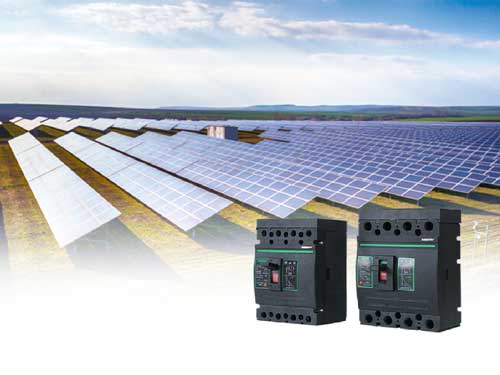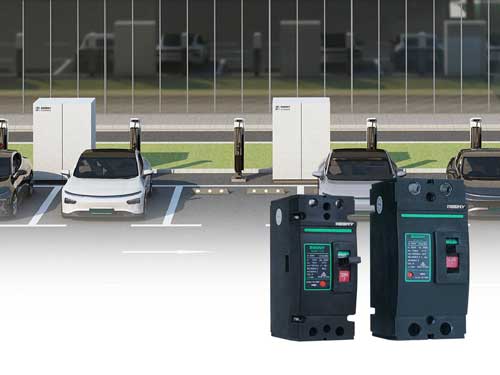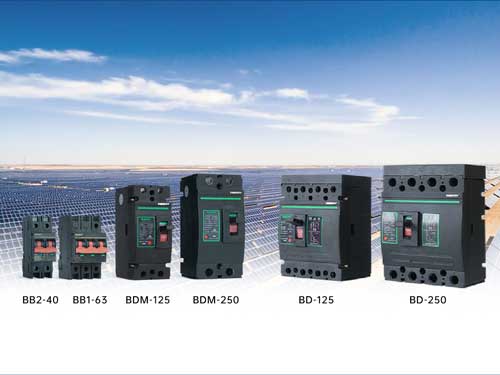Beny OCPP EV Charger in Azerbaijan
In modern society, electricity has become an indispensable part of our daily lives. The reliability of the electrical system is crucial for maintaining normal life operations. Direct Current (DC) circuit breakers play a vital role in the electrical system, serving as essential devices responsible for protecting the system and electronic equipment. Let’s dive into some key aspects of circuit breakers like basic concepts, working principles, applications, and significance to have a better understanding of them.
Basic Concepts
A DC circuit breaker is a switching device capable of making, carrying, and breaking the normal circuit conditions of direct current and also making, carrying, and breaking the abnormal circuit conditions within specified time limits. Its primary function is to detect and isolate faults to prevent issues such as overload or short circuits that could lead to fires, equipment damage, or instability in the electrical system. Typically, a DC circuit breaker consists of the following main parts:
Contact System: This is a crucial part of the circuit breaker responsible for making and breaking the circuit. It carries the electric arc generated when the circuit breaker is opened and closed.
Arc Quenching System: This system rapidly extinguishes the electric arc generated during the opening and closing of contacts.
Operating Mechanism: The operating mechanism converts the handle's on-off motion into the opening and closing of the contacts, enabling the circuit breaker to function.
Electromagnetic Trip System: This system monitors the current magnitude and triggers the circuit breaker's switch action within a specified time if the current exceeds a safe threshold.
Control Unit: The control unit typically comprises electronic components and mechanical actuating elements. It monitors the current status and controls the operation of the circuit breaker. It can also interface and communicate with other equipment or systems for automation control.

Working Principles
The DC circuit breaker’s working principle is similar to that of a regular electrical switch, with the key difference being its ability to interrupt large currents in a DC circuit when circuit faults occur. When an overload is detected, the circuit breaker responds by sending an overload signal through the electromagnetic trip system, which, within the specified time, actuates the operating mechanism to open the contacts and disconnect the circuit. In the event of a short circuit, where the current rises rapidly, the electromagnetic trip system rapidly responds, actuating the operating mechanism to open the contacts and, with the assistance of the arc quenching system, quickly extinguishing the electric arc to disconnect the circuit. These effectively prevent circuit faults, safeguarding equipment and ensuring personnel safety.
Wide Applications
DC circuit breakers primarily serve to protect circuits from faults caused by overcurrent and overvoltage, ensuring the stability of electrical systems. In modern industrial production, power systems, and electronic equipment, DC circuit breakers find widespread application in (but not limited to) the following areas:
Industrial Automation Systems: Protecting equipment such as motors, variable-frequency drives, and programmable logic controllers (PLCs) from the impact of overload or short circuits to ensure stable production lines and equipment reliability.
Photovoltaic and Wind Energy Systems: Used for connecting and disconnecting solar panels and wind turbines with battery banks to maintain safe current levels and prevent system damage.
Battery Management Systems: Employed in electric vehicles, uninterruptible power supplies (UPS), and battery energy storage systems to protect battery packs from overcharging or over-discharging hazards. They can also be used to disconnect battery packs from other electrical systems for maintenance or repair.
Telecommunication and Communication Systems: Applied to safeguard power equipment from current fluctuations and faults, ensuring continuous operation of communication devices.

Vital Significance
DC circuit breakers play a critical role in different systems, providing overload protection and short-circuit protection functions. Their significance is evident in the following ways:
Overload Protection: In the event of a circuit overload where the current passing through the bimetallic element increases, the bimetallic strip deforms due to differential thermal expansion (electronic types: triggered by electronic current sampling calculation). This deformation triggers the trip mechanism, disconnecting the circuit and achieving overload protection.
Short-Circuit Protection: When the impedance of the circuit suddenly changes, as in the case of phase-to-phase short circuits, causing a rapid and substantial increase in current, sometimes reaching several times or even tens of times the rated current, a powerful electromagnetic field is generated within the circuit. The electromagnetic trip system is triggered (electronic types: triggered by electronic current sampling calculation), disconnecting the circuit and achieving short-circuit protection.
Through these protective functions, DC circuit breakers can swiftly disconnect faulty circuits, preventing abnormal currents from propagating throughout the entire electrical system. This safeguards critical electronic equipment from damage caused by overload or short-circuits, ensuring system stability while mitigating the threat of electrical hazards to personnel. They play an indispensable role in critical sectors such as industrial production, power systems, and data centers.
Beny’s Innovative Solutions
As a DC circuit breaker manufacturer, Beny offers a range of solutions to meet various application needs, including DC Molded Case Circuit Breakers (MCCB), DC Miniature Circuit Breakers (MCB), and DC circuit breakers for battery energy storage systems.

BB1-63/BB2-40 DC MCB: As DC breaker for solar and energy storage systems, it features overload, short-circuit, and reverse-flow protection functions, as well as arc flash protection. BB1-63 operates at a system voltage of DC1200V and a frame current of up to 63A while BB2-40 operates at DC1500V and is suitable for scenarios with frame currents below 40A, meeting market demands and certified by TUV Rheinland, CE, CB, Australia RCM, and UL (BB2-40 only).
BD Series PV DC MCCB: They are primarily used in large-scale solar power generation systems, such as inverters, DC distribution cabinets, and DC combiner box components, suitable for high-voltage and high-current loads, and equipped with overload and short-circuit protection functions. They feature a DC rated voltage of up to 1000V and a current load range of 63A-250A, passing extreme environmental testing from -40°C to +85°C, and certified by RoHS, CE, CB, TUV Rheinland, and other standards.
BDM Series DC MCCB: Designed for commercial solar PV battery energy storage systems, electric vehicle charging stations, commercial battery storage, and UPS applications, providing reliable protection and isolation. Compliant with IEC standards, it offers a rated working voltage of DC500V and a rated working current range of 65A-250A, delivering overload protection and control for DC circuits. The product undergoes extreme environmental testing from -40°C to +85°C and can be equipped with an IP65 UV-resistant and lockable enclosure for outdoor installation, making it adaptable to harsh operating environments.
Beny also offers DC circuit breaker customize services to meet specific customer needs and system configurations, ensuring safety, reliability, and maximum satisfaction.
DC circuit breakers play an important role in modern electrical systems, not only in disconnecting circuits but also in protecting equipment, ensuring personnel safety, and maintaining electrical system stability. Beny, a DC circuit breaker manufacturer and supplier, has maintained a leading position through technological innovation and high-quality products. With the rapid development of renewable energy and electric transportation, the demand for DC circuit breakers continues to grow. Beny will continue to invest in research and development to meet market demands, providing customers with safe and reliable DC transmission and distribution solutions.





